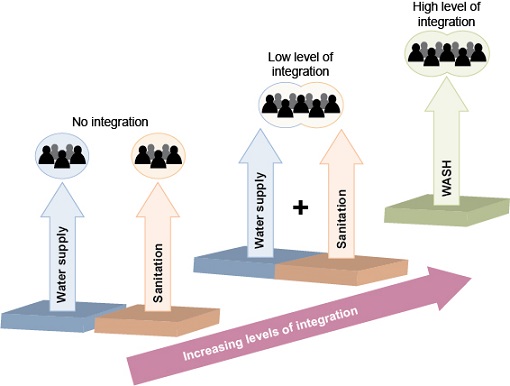4.2 Integration
Integration means the act of combining or linking together two or more different activities to achieve certain objectives. To integrate can variously mean to repair, make whole, unite, connect or bring things together.
The OWNP Programme Operational Manual describes this principle as (POM, 2014):
This principle aims at integrating safe water use with good sanitation and hygiene practices at the household level, in schools and health facilities (institutional WASH) through synergy built among the four sectoral offices: water, health, education and finance. This includes coordinated and collaborative planning, implementation, monitoring, reporting and evaluation of program results.
The term ‘integration’ is frequently associated with the word ‘synergy’. Synergy refers to the results of coordinated actions being greater than the sum of the individual actions. If activities are described as synergistic, it means they achieve more together than they would have done separately or, to put it another way, there is an additional benefit that could not have been achieved by the separate actions. The aim of successful integration, therefore, is to produce synergies and to maximise the impact, sustainability, appropriateness and effectiveness of interventions, thereby creating greater benefits for all.
The concept of integration and its application in different development programmes, including WASH, has been realised in the past few years, and nowadays its importance as a core principle is widely recognised. People are aware that a lack of integration can lead to ineffectiveness of investments and end up with poor results. Figure 4.2 shows how there can be different levels of integration and how separate interventions will probably have fewer beneficiaries than integrated programmes.
Although the benefits associated with inter-sector (between two or more different sectors) or intra-sector (within one sector) integration are well understood by many, the practical know-how about how to achieve integration may still be doubtful. In any context, effective integration relies on good communication and coordination between the actors in order to achieve the best results.

4.1 Origins of the OWNP Guiding Principles
